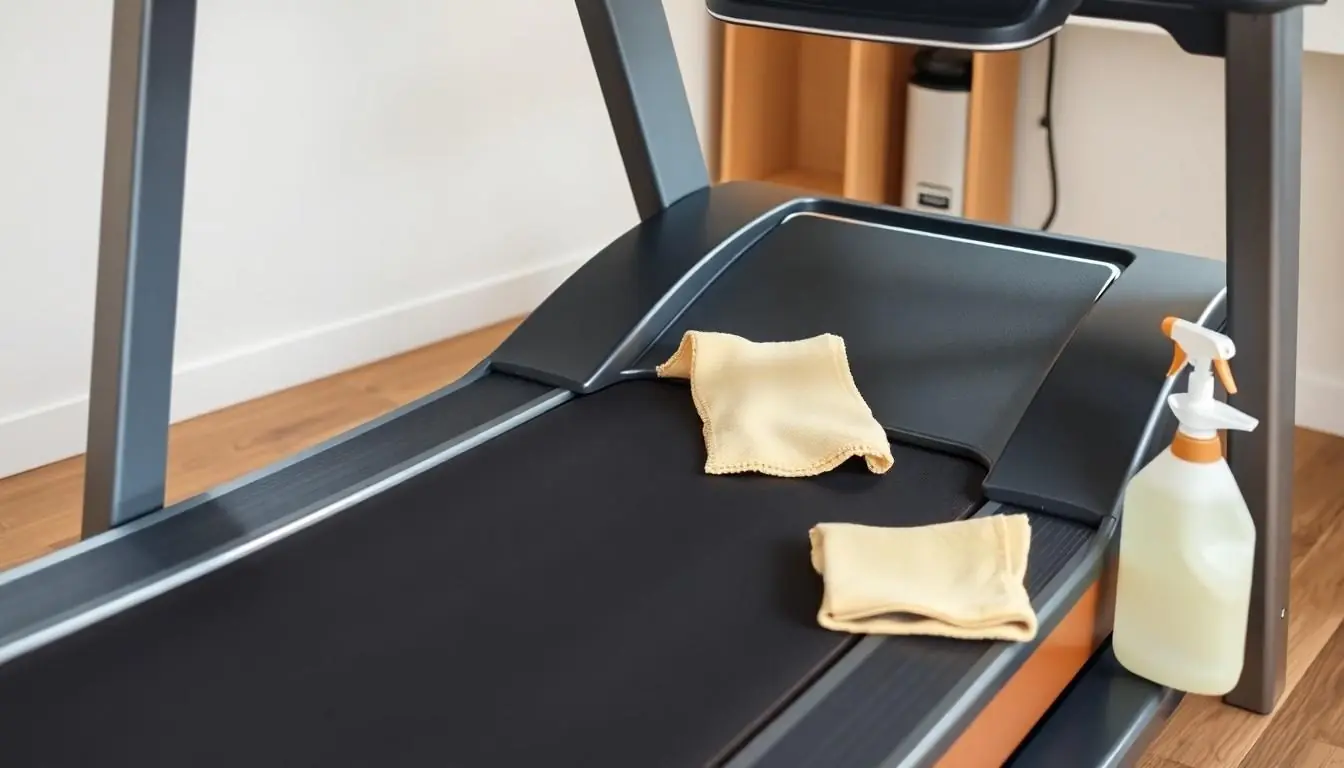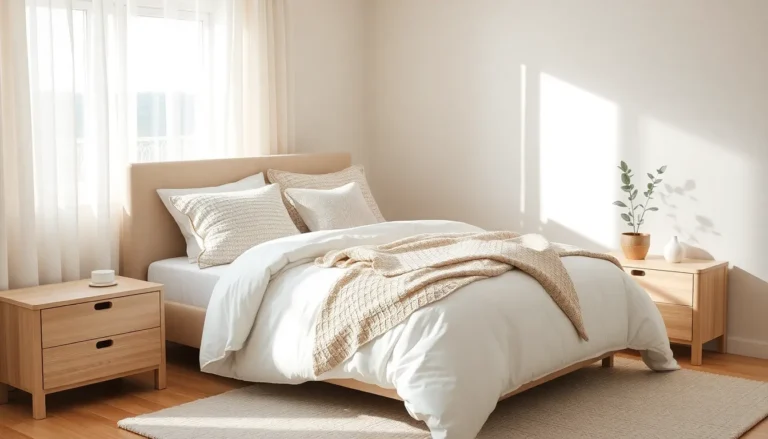Home fitness equipment can be a real game changer, turning any living room into a personal gym. But just like that treadmill that doubles as a clothes rack, these machines need some TLC to keep them in tip-top shape. Neglecting maintenance can lead to squeaks, creaks, and the dreaded “I swear it was working yesterday” moment.
Whether it’s a dusty stationary bike or a rebellious set of dumbbells, knowing the common maintenance procedures can save both time and money. After all, nobody wants to be that person who has to explain to their friends why their fancy elliptical is now a high-tech paperweight. So let’s dive into the essential upkeep tips that’ll keep your home fitness equipment running smoothly and maybe even give you a chuckle along the way.
Table of Contents
ToggleImportance of Maintenance for Home Fitness Equipment
Routine maintenance ensures home fitness equipment functions optimally and remains safe for use. Regular checks can prevent minor wear from escalating into significant problems. Neglecting equipment can cause unwanted noise, decreased performance, or even complete breakdowns.
Inspecting machines regularly contributes to longer lifespans for treadmills, ellipticals, and stationary bikes. Each type of equipment demands specific attention. For instance, lubricating moving parts prevents rust and reduces friction, promoting efficiency.
Cleaning surfaces after use removes sweat and debris, which can lead to deterioration. Dust buildup can interfere with mechanical components, leading to malfunctions. Checking cables and connections helps identify weak points before they lead to safety hazards.
Estimated annual upkeep costs can be significantly lower than repairs caused by neglect. Following a proper maintenance schedule fosters confidence in the equipment’s functionality.
Maintaining fitness gear enhances the user experience by providing smooth operation and reducing frustrations. Active users benefit from knowing their equipment remains reliable, encouraging consistency in workouts.
Fostering a routine around maintenance instills care for the equipment, enhancing overall workout enjoyment. Regular maintenance becomes a crucial step in maximizing investments in fitness gear for home use.
Common Maintenance Procedures

Maintaining home fitness equipment enhances functionality and longevity. Several common procedures ensure machines operate correctly and safely.
Regular Cleaning
Cleaning equipment after each use prevents the buildup of dust and sweat. Focus on surfaces, especially where hands make contact. Use a mild detergent and soft cloth for optimal results. Germs thrive in unclean environments, so wiping down machines reduces health risks. Regular cleaning also improves equipment appearance and encourages ongoing use.
Inspection of Components
Inspecting equipment components regularly identifies potential issues before they become serious. Check cables, brakes, and resistance systems for wear. Look for loose screws and frayed wires to maintain safety during workouts. Scheduling inspections quarterly prevents unexpected malfunctions and costly repairs. Observing signs of wear can lead to timely interventions, ensuring equipment stays reliable.
Lubrication of Moving Parts
Lubricating moving parts reduces friction and extends equipment life. Apply lubricant to belts, chains, and joints as specified by the manufacturer. Routine lubrication prevents wear and tear while enhancing the overall workout experience. A well-lubricated machine operates smoothly and quietly, thus making workouts more enjoyable. Following a lubrication schedule helps maintain optimal performance and efficiency.
Specific Equipment Maintenance
Regular upkeep of fitness equipment ensures functionality and longevity. Each type of machine requires distinct maintenance practices.
Treadmills
Treadmill maintenance involves checking the belt tension regularly. Inspecting the running surface helps prevent wear and tear. Cleaning the deck consistently removes dust and debris, which can affect performance. Lubricating the belt keeps it moving smoothly, reducing friction. Cables and connections must receive periodic inspections to catch issues early, avoiding significant repairs. Tightening loose bolts maintains stability during workouts. Following these practices promotes a safe and effective running experience while maximizing investment.
Exercise Bikes
Upkeep for exercise bikes starts with checking the resistance mechanism. Ensuring it operates smoothly allows for optimal workouts. Regularly cleaning the frame and components prevents dust buildup that could hinder performance. Inspecting and tightening pedals prevents unexpected malfunctions during rides. Additionally, monitoring the seat height and handlebars ensures proper alignment and comfort. Routine lubrication of moving parts enhances the riding experience by minimizing noise. Following these steps fosters a long-lasting, dependable cycling routine.
Ellipticals
Elliptical maintenance focuses on checking the stride length and alignment. Ensuring these adjustments maximize comfort and effectiveness improves workout quality. Cleaning the rail and moving parts is crucial to prevent grime buildup, which can disrupt motion. Inspecting the electronic connections verifies they function without interference. Regularly lubricating the drive system reduces friction, promoting quieter operation. Additionally, monitoring the console for responsiveness prevents technical issues during workouts. Maintaining an elliptical optimizes performance and extends equipment lifespan.
Regular maintenance of home fitness equipment is essential for ensuring longevity and optimal performance. By implementing simple upkeep procedures like cleaning and lubrication, users can prevent minor issues from escalating into costly repairs.
Paying attention to specific equipment needs enhances safety and boosts workout efficiency. A consistent maintenance routine not only saves money but also fosters confidence in the equipment’s reliability.
Investing time in these practices will lead to a more enjoyable and effective fitness journey. Prioritizing maintenance is a smart decision that pays off in both the short and long term.


